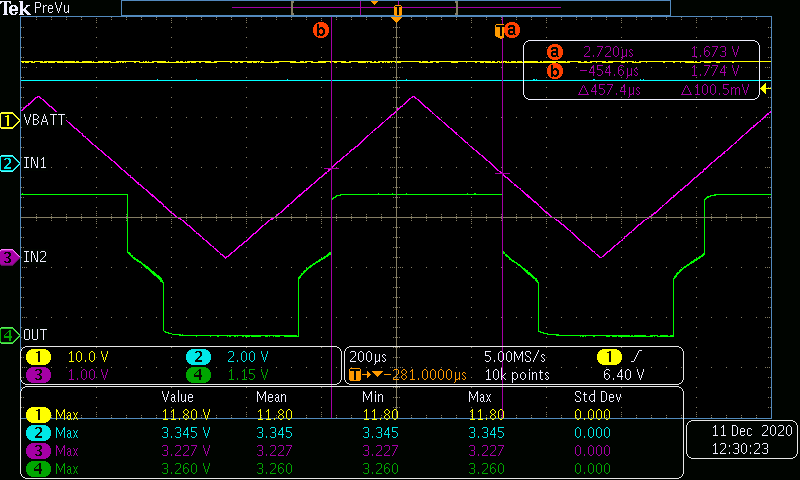Hi ,
I am using SN74LVC2G08-Q1 in my project application and I while validation I find some discrepancy in the output waveform. I have provided IN1 = 3.3V and have provided a triangular waveform with 10kHz at IN2. We can find from the waveform that high level input voltage is 1.774V and low level input voltage is 1.673V .I find these values different from those provided in the datasheet for VCC= 3.3V.Please explain the deviation.


